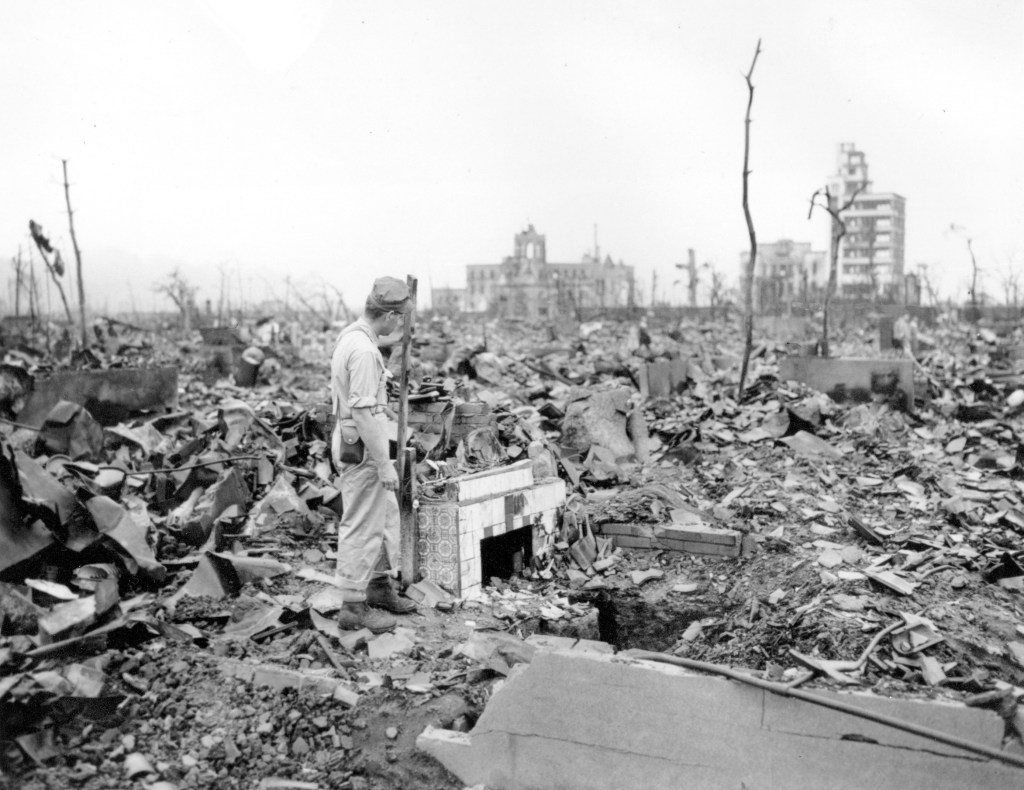With U.S. strikes on Iran sparking fears of a nuclear conflict, it begs the question: What U.S. cities are most at risk?
One nuclear expert identified New York, Chicago, Houston, Los Angeles, San Francisco and Washington, D.C., as the most likely targets. But if we use history as our guide, Hampton Roads could very well be a first-strike target of a nuclear weapon.
My grandfather was one of the first Americans to enter Nagasaki, just weeks after the atomic bomb. As a medic, he was exposed to many of the physical horrors the bomb inflicted on survivors, developed PTSD and died young from alcohol abuse.
Along with the author Karin Tanabe, whose family fought on the Japanese side of the war, I’ve spent the past year traveling around the world filming the documentary, “Atomic Echoes: Untold Stories of World War II,” which premieres on PBS in August.
We’ve spoken to historians, the last surviving American atomic veterans, and Japanese atomic bomb survivors and experts. We’ve learned that what happened in 1945 is more than a cautionary tale; it also provides terrifying insight into what a conflict today could look like.
The biggest cities may not be the likeliest first-strike targets. In 1945, the largest cities in Japan, based on population, were Tokyo, Osaka and Nagoya. But the U.S. chose Hiroshima as the first target because it was a major military center, housing the headquarters of the Japanese Second Army (responsible for defending southern Japan).
The original second target for the bomb was Kokura, which housed one of Japan’s largest military arsenals. But when the city was obscured by cloud cover and smoke on Aug. 9, 1945, the mission was diverted to. Nagasaki, a port city, was home to many shipyards, steelworks and armaments factories.
Ultimately, the goal of a nuclear strike is to inflict: 1) operational damage and 2) psychological damage (in World War II to frighten the Japanese into unconditional surrender in order to save “over a million” American lives, as Secretary of War Henry Stimson explained in 1947).
I also spent nine years living in Virginia Beach, as the spouse of a Navy F-18 pilot. If operational damage is one of the key goals of a bomb, Hampton Roads, with its high number of military facilities and troop concentrations, would be a very possible target.
Naval Station Norfolk, the world’s largest naval base, is the headquarters for the U.S. Navy’s Fleet Forces Command (responsible for training and deploying the Navy’s Atlantic fleet).
Newport News Shipbuilding is the only U.S. shipyard capable of building nuclear-powered aircraft carriers and one of two that builds nuclear submarines.
Virginia Beach is home to three critical bases for aviation and special forces: Oceana Naval Air Station, Dam Neck Naval Base and Joint Expeditionary Base Little Creek-Fort Story.
The Port of Virginia is one of the busiest ports on the East Coast.
If a first strike is designed to cripple an adversary’s ability to retaliate, targeting Hampton Roads would certainly do that.
Sign up for Viewpoints, an opinion newsletter
I’m not saying this for shock value, but because education is so important to avoiding a nuclear war. In U.S. schools, we’re taught about the mushroom cloud, but little else. We’re not taught about the devastating long-term impact of atomic weapons. Even my grandfather, who fought for the Americans, was still in a way a victim of the atomic bomb.
Even with the situation in Iran, nuclear seems both unlikely and abstract to many Americans. But this is not just a topic for politicians. We all have a stake in this future.
Victoria Kelly of Arlington is the author of three books, including “When the Men Go Off to War” and “Homefront,” and a 2025 Scholar with the George W. Bush Presidential Center’s Stand-To Veteran Leadership Program. She is the producer of “Atomic Echoes: Untold Stories of World War II,” which premieres nationally on Aug. 1 through public television stations and streaming on the PBS app.
